In the realm of dentistry, the once-prevalent silicate restorations from the 1950s, 60s, and 70s have given way to the advancements of successive generations of composite resins and contemporary dental materials. Similarly, the field of practice transitions in dentistry is experiencing a transformative evolution, mirroring the innovations seen in clinical practices. Traditionally, practice transitions involved the straightforward concept of a Walk Away Transition, where the seller immediately exited, and the purchaser took over simultaneously. However, this paradigm is now being replaced by a myriad of creative practice transition models that cater to the specific needs of both buyers and sellers.
The dynamics of the transition market are undergoing significant shifts, influenced by factors such as the purchase price as a percentage of gross annual receipts, the time required for transitioning practices, changes in supply and demand due to aging dentists entering pre-retirement stages, competition from Dental Service Organizations (DSOs), demographic changes among patients and practicing dentists, and the economic downturn resulting from the current recession.
The conventional approach of establishing a value, entering into an agreement, exchanging funds, and transferring assets and patient care responsibilities has given way to the recognition of the need for more innovative programs. While the traditional method may still be effective in certain scenarios, the dental practice transition field increasingly acknowledges the necessity for more creative strategies to maximize value and efficiency.
Though it is impractical to provide an exhaustive list and detailed definitions of these creative strategies within the limited scope here, several concepts can be briefly alluded to. Sellers now have the enticing possibility of selling their dental practices for 100% of a year’s gross receipts, and some ingenious transition programs even allow sales for as much as 120% of a year’s gross receipts. For those considering the sale of a significant portion of their practice in the coming years, these innovative concepts may be of great interest.
Conversely, aspiring young dentists contemplating the purchase of a practice may find hope in programs that enable them to name their own price for acquiring a practice. Creative strategies, such as Deferred Pre-Sale and the “earned equity” concept, provide flexibility for both sellers and buyers. In the Deferred Pre-Sale, the seller retains practice ownership, financial responsibility, and managerial control for a pre-defined period, after which the roles reverse. The “earned equity” concept allows the young purchaser to accumulate credits toward the purchase price based on production or time requirements.
Additional creative practice transition strategies include Incubator Programs, Two Stage Closings, and Present Value/Future Value Transitions. Incubator Programs involve developing a practice for a new doctor using the excess patient base of an existing doctor who does not want to sell but desires compensation for their surplus patients. Two Stage Closings allow young doctors to amortize practice assets immediately with little to no money exchanged, while the seller defers taxes until a more favorable future date. Present Value/Future Value Transitions create an above-current-fair-market-value scenario to maximize transition receipts for the seller.
These innovative practice transition strategies are available for consideration and use where traditional approaches fall short. While not every practice may meet the criteria for these creative strategies, awareness of the possibilities is crucial. Buyers, sellers, and shareholders must engage knowledgeable, ethical, creative, and experienced advisors, including practice transition consultants, accountants, and attorneys. In essence, successful practice transitions involve determining the needs of the parties involved, matching them with complementary opportunities, and employing consultants to navigate the complex field of practice transitions.
Looking ahead, traditional transitions will persist, but the trend indicates an increasing reliance on creative approaches. Dentists must adapt to these changes, emphasizing the importance of extensive planning, creativity, and increased time frames to ensure fair compensation and successful transitions. The future of practice transitions in dentistry remains promising, requiring a shift in paradigms to accommodate evolving needs and maximally benefit both sellers and buyers.
 Skip to content
Skip to content

